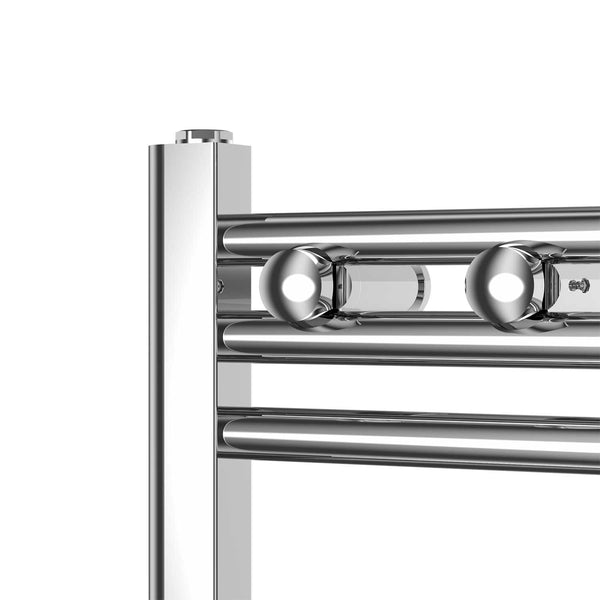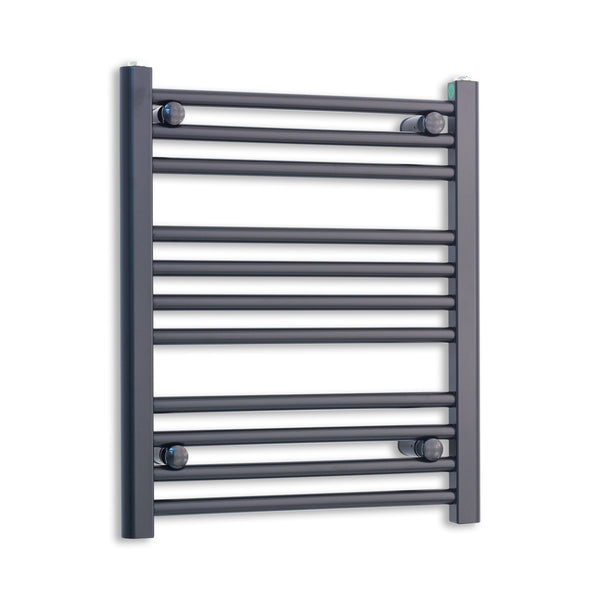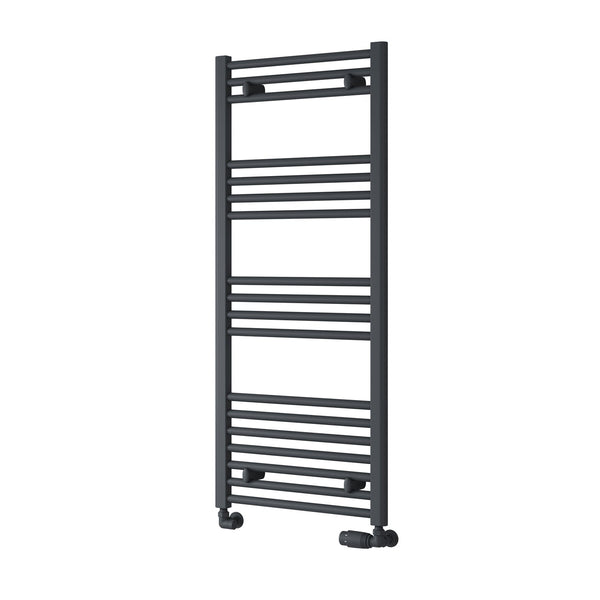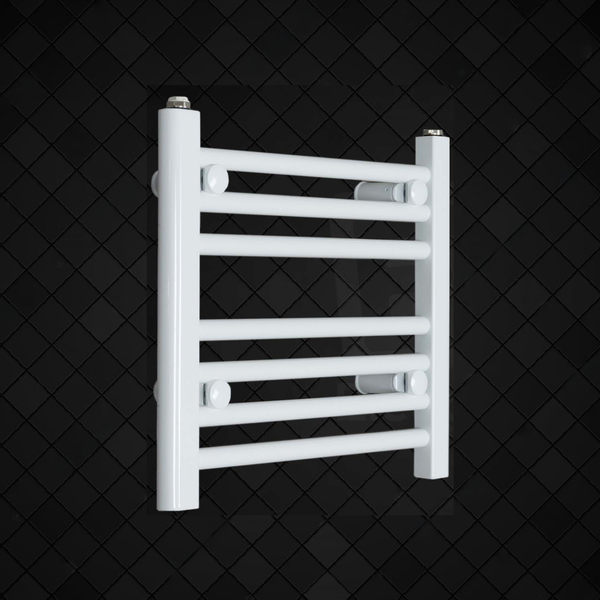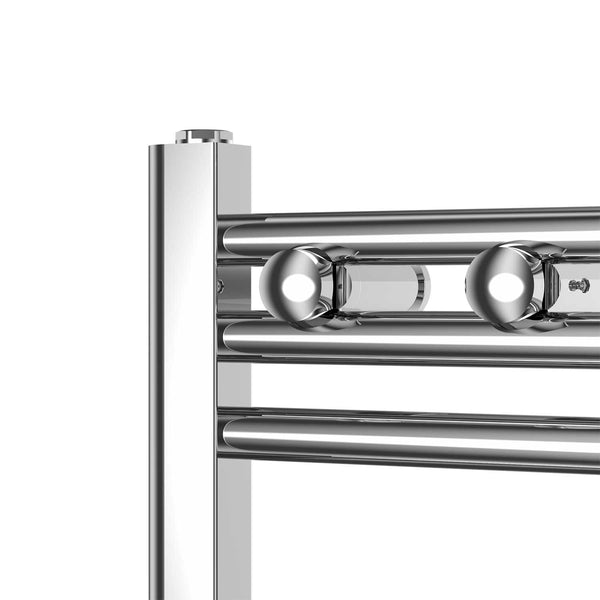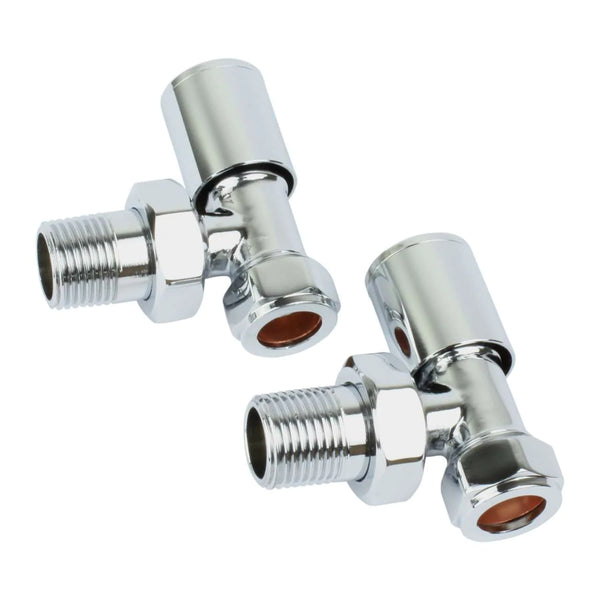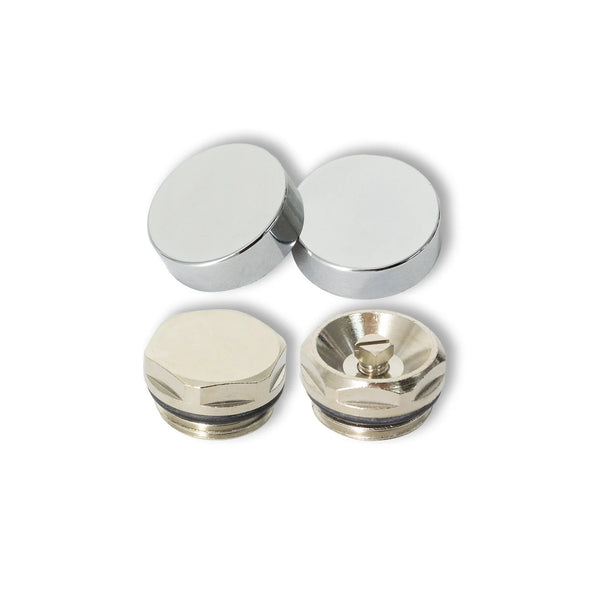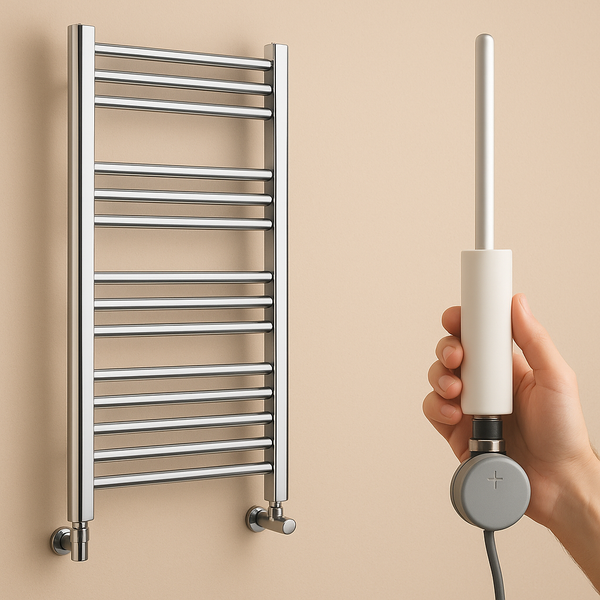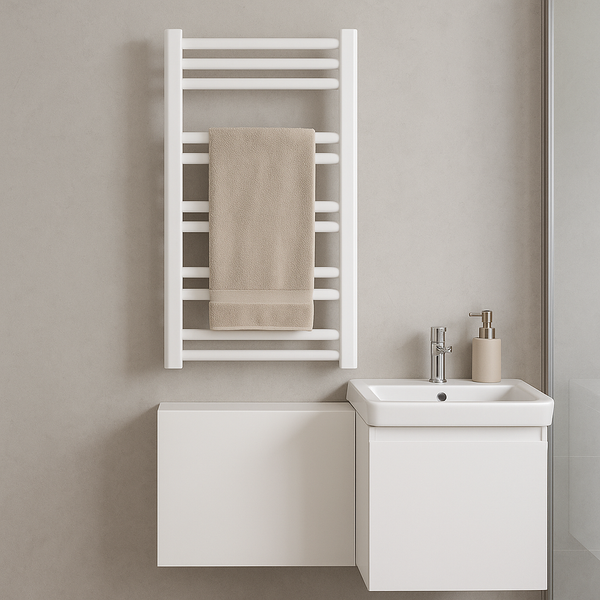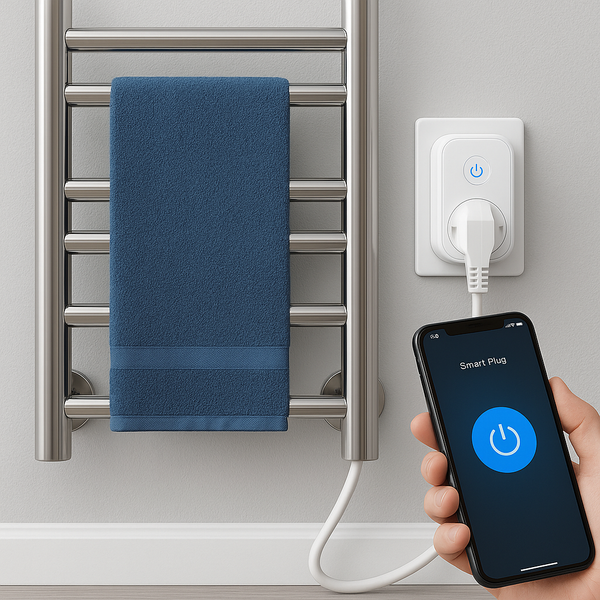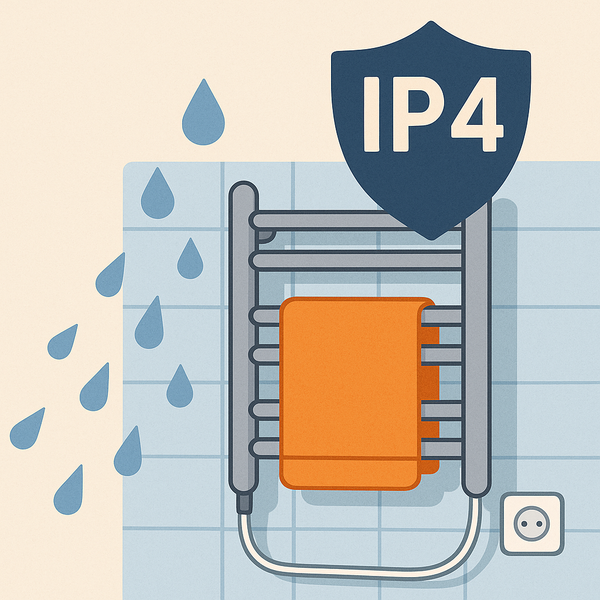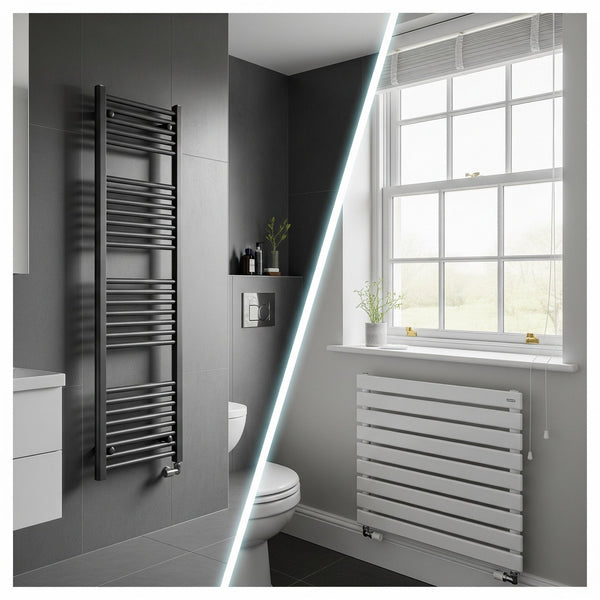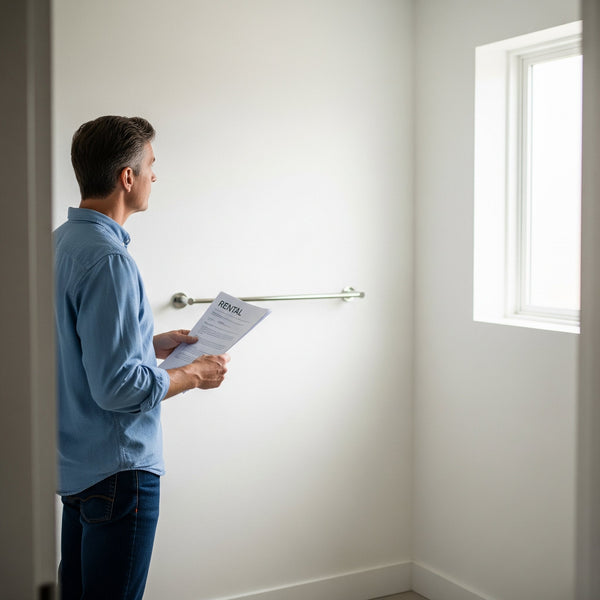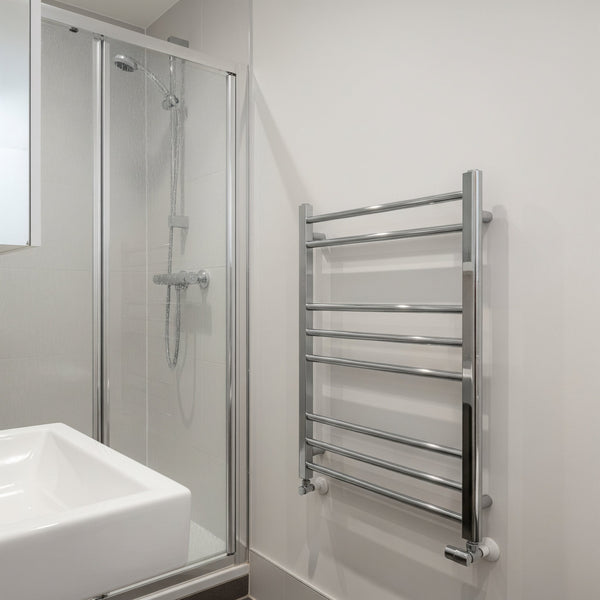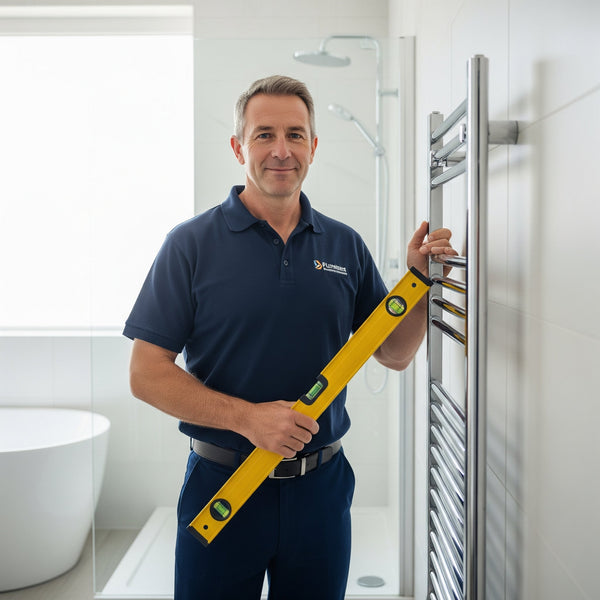Tools for the Job: What You'll Need in Your Towel Rail Installation Kit
There's nothing more frustrating than starting a DIY project only to discover you're missing a crucial tool halfway through. When it comes to installing a new heated towel rail, being prepared is the key to a smooth, stress-free, and successful job. Having the right tools and materials on hand not only saves you time and multiple trips to the hardware store but also ensures the installation is safe and secure.
To help you get organised, we at Company Blue have assembled the ultimate checklist. This is your definitive guide to every tool and material you'll need in your towel rail installation kit. We'll break it down by task, so whether you're replacing an old radiator or just mounting a new electric model, you'll know exactly what to have ready. Let's build your toolkit!
Safety First: Before starting any work, always ensure the central heating is switched off and fully cooled. For any electrical work, the mains power must be shut off. We always recommend hiring qualified professionals for plumbing and electrical connections.

Part 1: The Absolute Essentials (For Every Installation)
These are the non-negotiable items you'll need for measuring, marking, and mounting any type of towel rail.
- Tape Measure: For measuring wall space, pipe centres, and bracket positions. Accuracy is everything.
- Spirit Level: Absolutely essential for ensuring your towel rail is perfectly horizontal. A crooked radiator will stand out for all the wrong reasons.
- Pencil: For marking drilling holes for the brackets. Simple, but vital.
- Power Drill: A combi drill that can handle both regular drilling and screwdriver functions is ideal.
- Drill Bits: You'll need the right type and size for your wall. A set containing various masonry and wood bits is a great investment.
- Dust Sheets or Old Towels: To protect your floors and bathroom suite from dust and, more importantly, from water when plumbing.
- Bucket: A must-have for draining an old radiator or catching water from the system.
Part 2: For Plumbing In a Central Heating or Dual Fuel Rail
If your project involves connecting to your central heating system, you'll need these plumbing-specific items.
- Adjustable Spanners (x2): You'll need two of these to tighten and loosen nuts on the valves and pipes. Using one spanner to hold the valve steady while the other tightens the nut is key to preventing leaks and damaged pipework.
- Radiator Bleed Key: A small, inexpensive tool that is essential for releasing trapped air from the towel rail after installation.
- PTFE Tape (Plumber's Tape): This thin white tape is used to create a watertight seal on threaded joints. Do not attempt a plumbing job without it.
- Grips or Pipe Wrench: Can be useful for holding onto older, more stubborn pipework or fittings.
Part 3: For Mounting on Different Wall Types
The wall itself dictates what you'll need for a secure fixing. Don't just use the fixings that come in the box unless you are certain they are right for your wall.
-
For Plasterboard (Drywall):
- Electronic Stud Finder: The best tool for quickly and accurately locating the wooden studs behind the plasterboard, which are the most secure fixing points.
- Heavy-Duty Plasterboard Fixings: If you can't fix to a stud, you need specialised fixings like Toggle Bolts, Hollow Wall Anchors, or GripIt® fixings. Make sure they are weight-rated for much more than the towel rail itself.
-
For Masonry (Brick/Block):
- Masonry Drill Bits: You'll need specific, tough drill bits to get through brick or block.
- High-Quality Wall Plugs: A selection of sturdy wall plugs designed for masonry.
Part 4: For the Electrical Connection (A Job for the Pros)
Warning: This part of the installation for an electric or dual fuel towel rail must be completed by a qualified electrician. This list is for your information only, so you can understand what the professional is doing.
- Multimeter: To safely test for live circuits and to check the connection is properly earthed.
- Wire Strippers/Cutters: For preparing the electrical cable for connection.
- Insulated Screwdrivers: A set of screwdrivers designed for electrical work to safely connect the wiring to the fused spur.
- Fused Spur: The safe, switched connection unit that the towel rail will be wired into.
FAQ: Your Toolkit Questions Answered
Have a question about a specific tool? We've got you covered.
Do I need any special, expensive plumbing tools?
Not usually for a straightforward replacement. The most important items are two good-quality adjustable spanners and a radiator bleed key. If your pipework needs to be altered (cut or extended), this requires more advanced tools like a pipe cutter and possibly soldering equipment, at which point it's often best to call a professional plumber.
What's the difference between a pipe wrench and an adjustable spanner?
An adjustable spanner has smooth jaws and is designed for gripping the flat-sided nuts on radiator valves. A pipe wrench has serrated, self-tightening jaws designed for gripping round pipes. You should use spanners for the nuts to avoid damaging them, while a wrench might be used to hold the pipe itself steady if needed.
Can I just use any drill bit for the wall?
No, using the wrong drill bit is a common mistake. A masonry bit is needed for brick and tile, as it has a tough, chisel-like tip. A standard wood or metal drill bit will be destroyed by a hard wall. Using a masonry bit on wood will tear the fibres and create a messy hole. Always match the bit to the material.
Do the towel rails from Company Blue come with screws and fixings?
Our towel rails typically come with the mounting brackets and a basic set of screws and wall plugs. However, these basic fixings are generally only suitable for solid masonry walls. We always recommend that you assess your specific wall type (e.g., plasterboard) and purchase the appropriate heavy-duty fixings separately to ensure a safe and secure installation.
What's the single most important safety item I need?
Besides basic protective gear like gloves, the most important "safety item" is knowledge and self-awareness. Knowing when a task is beyond your skill level and requires a professional is crucial. For plumbing, it's a watertight seal. For electrics, it's the phone number of a qualified electrician. Don't take risks with water or electricity in your home.
